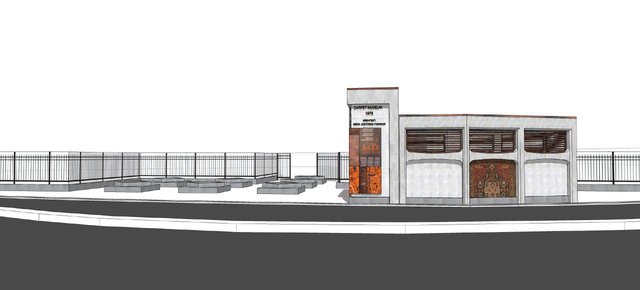A ventilator of Tehran's subway station located right next to the Carpet Museum of Iran at the Kargar-Fatemi Junction has led to a dispute involving the officials of Tehran City Council, Tehran Metro Company and Iran's Cultural Heritage, Handicrafts and Tourism Organization. Tehran Metro Company first planned to set up one of the four ventilators of the station inside the museum's area. Following ICHHTO's opposition, it is now to be erected next to the museum's entrance.
Tehran's ICHHTO office claims that it had no choice but to agree to the plan, as there was no other feasible solution, ISNA reported. Rajabali Khosro-Abadi, the head of ICHHTO's provincial office, said in a phone conversation on national television that his office agreed to the plan "on condition that the structure, along with the ones on the other three sides of the junction, will bear the museum's poster".
Despite the provincial ICHHTO's compromise, Tehran City Council's Cultural Heritage Committee has voiced strong objection to the plan.
Hassan Khalil-Abadi, the head of the committee, said on the television program that Tehran Metro Company and ICHHTO cannot allow such a huge structure to be built within the primary buffer zone of one of the most distinguished carpet museums in the Middle East. "Based on the regulations, the cultural site's buffer zone must be preserved and the erection of not even a chimney is allowed in this zone," he said.
Sepideh Sirousnia, the deputy head of Tehran's ICHHTO office, told ISNA that the office will welcome any solution that will lead to the relocation of the ventilator, but negotiations have not yet succeeded in finding a solution.
"The office was against the project but could not suspend it, because it had been referred to it too late," she said.
Mohammad Reza Kargar, director for museum affairs at ICHHTO, said a team of experts will investigate the impacts of the project on the museum's visual appearance.
"If it turns out that the structure tarnishes the view of the museum, the office will oppose the project," he said, adding that the reasons of Tehran's ICHHTO office will be studied to ensure all options have been considered before reaching an agreement.
The Carpet Museum of Iran was built in 1977 and exhibits a variety of Persian carpets from all over Iran, dating from the 16th century up to the present. It is on the list of national heritage sites.


